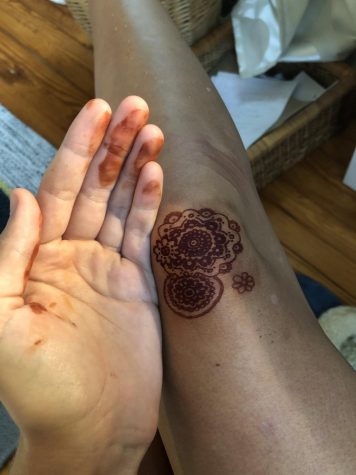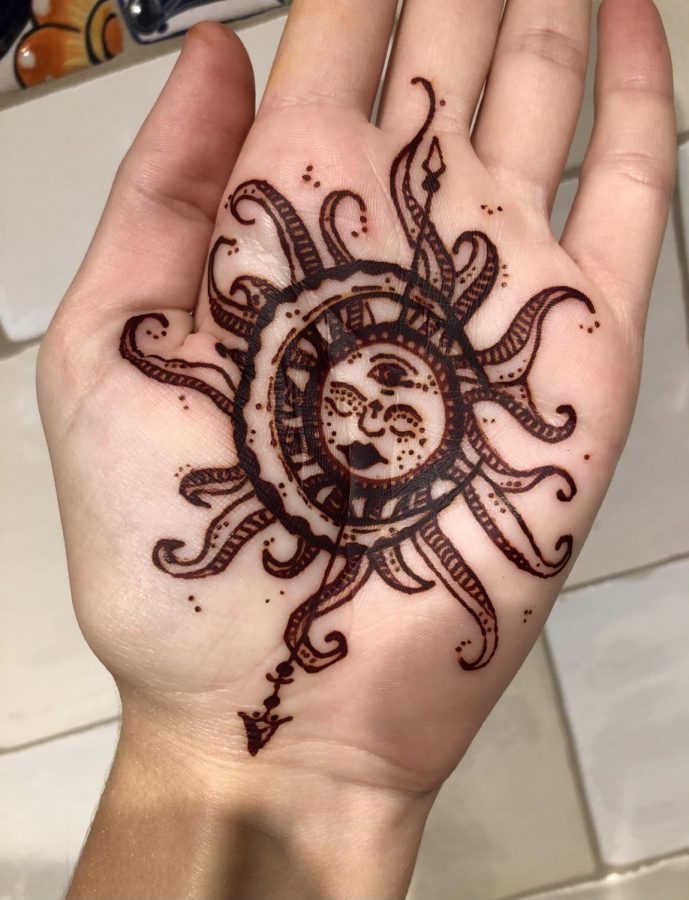What is Henna?
And why I love it…
Last spring, in the midst of the boredom of quarantine, I decided to order some random stuff off Amazon. I think I got some stickers, some books, but the best thing that I bought was a set of Henna tubes, in three colors: black, brown and red.
I had always seen vendors at festivals offering Henna tattoos, and I had always wanted to get one, but never did. Now, though, I have learned to do it myself!
For those of you who don’t know what Henna is, it is a powder created from the Henna tree, aka Lawsonia inermis that is used to dye skin, hair, nails, and fabric. It is also known as Mendhi in India. The powder is mixed with a liquid and applied.
Traditionally, henna has been used to adorn young women’s bodies for special occasions. Especially in India, North Africa, the Arabian Peninsula, and Southeast Asia, bridal henna is common for brides and even grooms. It symbolizes joy and luck.

Today, henna is gaining popularity around the world. I am obviously not getting married, but I still enjoy decorating my skin (especially my hands) with the natural, beautiful paste. The henna I have comes in a cone, with a small hole at the end for intricate details.
I love to do my henna and others’ because it is so relaxing. Coming up with all the different designs and “painting” them on skin is almost meditative. It is a form of art that is not permanent, which is great for beginners like me who make mistakes sometimes too… because the stain only lasts about a week, I don’t need to get attached. Once, though, I decided to try out the red on my knee, smudged it, and then it looked like a bruise- really bad, right? Luckily I was able to get most of the dye out by scrubbing it with an old toothbrush and a paste made of baking soda and lemon. Moral of the story- try to plan it out before.

My favorite color of the henna is the natural brown. It looks best on my skin tone, especially when I was tan during the summer. Second favorite is probably red because it looks so beautiful, more like art than anything else. Black is okay, but it is not natural- it doesn’t come from the henna plant, and is more likely to irritate your skin.

When you first apply the dye, you have to let it dry thoroughly in order for it to seep into your skin. Then you peel it off. At first, it is a bright orange color, but in a few hours/overnight, the dye will turn darker into its color. The only exception to this is black- it starts out black and stays black.
I haven’t tried dyeing my hair with it yet, though. If you have blonde hair it might work best, but I have brownish hair so it may not be super noticeable.
If you want to try out Henna, I’d definitely recommend doing it! you can make small designs, like rings on your fingers, or larger designs on you hands, arms, or feet. Another plus is that it doesn’t stay on for a long time. Also, if you’re thinking about getting a tattoo, you can draw the design with henna to try it out!
P.S. Unfortunately, I only have 2 pictures of the henna I’ve made. One is my first, and the other is my most recent. Trust me, there should be more pics but for some reason I took none. You can’t tell from the photos, but my favorite design to do is on the back of my hands, a floral or geometric design that connects to a band (kind of like a think bracelet) around the wrist.
P.P.S. Some unnatural hennas (like the black) are risky- they may contain paraphenylenediamine (PPD) that can cause chemical burns and allergic reactions. Read the ingredients, reviews, and put a small bit on your skin to check that it won’t hurt you.








